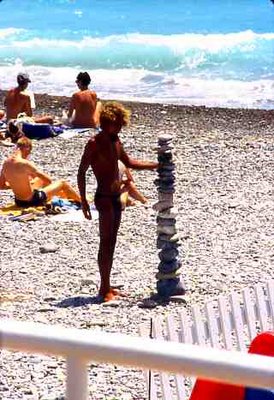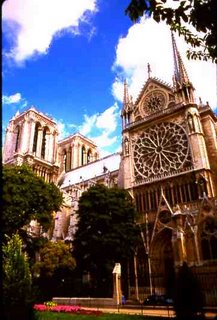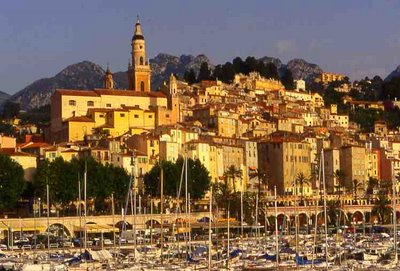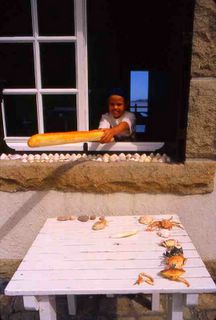







www.LoriHein.com

Her book, Ribbons of Highway: A Mother-Child Journey Across America, takes you around the U.S. Her blog takes you around the world. Lori Hein, who's written for scores of publications including the Boston Globe and Philadelphia Inquirer, hopes you enjoy these brief trips to far-flung places. Text & photos, all copyright Lori Hein, are available for reuse and publication for a modest fee. Contact Lori at www.LoriHein.com.












 Wood carvings might be the world's most ubiquitous souvenir. You can find "traditional local crafts" made of wood nearly anywhere with trees and tourists.
Wood carvings might be the world's most ubiquitous souvenir. You can find "traditional local crafts" made of wood nearly anywhere with trees and tourists.

 I may catch some merde for this from tourists whose itineraries are ruled by generally accepted and rarely questioned must-see lists gleaned from all the guidebooks and articles and websites ever written about a place and who feel incomplete if they leave items unticked, but I suggest you skip the following Paris sights should you have but a few days to a week to spend in the City of Light in high season.
I may catch some merde for this from tourists whose itineraries are ruled by generally accepted and rarely questioned must-see lists gleaned from all the guidebooks and articles and websites ever written about a place and who feel incomplete if they leave items unticked, but I suggest you skip the following Paris sights should you have but a few days to a week to spend in the City of Light in high season. Bastille Day is technically over where I'm at, although the Champ de Mars under the Eiffel Tower, and the Place de Trocadero across the Seine from it, will be hopping until well into July 15th. It's 12:30 AM on the 15th now in Paris, and Dana and I are happily ensconced at our Maison Zen digs after having participated in some of the Bastille Day festivities.
Bastille Day is technically over where I'm at, although the Champ de Mars under the Eiffel Tower, and the Place de Trocadero across the Seine from it, will be hopping until well into July 15th. It's 12:30 AM on the 15th now in Paris, and Dana and I are happily ensconced at our Maison Zen digs after having participated in some of the Bastille Day festivities.

 So many sardines, so little time...
So many sardines, so little time...







 making their crampon-clad bids for Mont Blanc's summit or, having done so and hopefully succeeded, picking their way back down to Chamonix. At one point I counted nearly 30 climbers in a single eye sweep.
making their crampon-clad bids for Mont Blanc's summit or, having done so and hopefully succeeded, picking their way back down to Chamonix. At one point I counted nearly 30 climbers in a single eye sweep. In the spirit of summer vacation and not working much -- indeed, not working at all -- I'm taking the lazy route this week and recycling a story some of you may have read. To most it will be new fare. Don't forget the barbecue sauce:
In the spirit of summer vacation and not working much -- indeed, not working at all -- I'm taking the lazy route this week and recycling a story some of you may have read. To most it will be new fare. Don't forget the barbecue sauce:The passage by the U.S. House of Representatives of the Horse Slaughter Prevention Act to "prohibit the shipping, transporting, moving, delivering, receiving, possessing, purchasing, selling, or donation of horses and other equines to be slaughtered for human consumption" may, if the Senate concurs, render illegal the work of Beltex, Cavel and Dallas Crown, the three foreign-owned horse slaughter plants located in the U.S that kill horses and ship the meat to France, Italy, Belgium and Japan, where people buy the flesh in restaurants and in their grocers' meat cases. (Appaloosa al fredo... pan-fried Friesian... Quarterhorse cutlets... marinated Morgan...)
Dana, my resident horse lover, has been to three of those four countries, and to five other countries where equine equals entree and, until our last trip to France, I’d been able to keep the awful horse-eating truth from her. “Cheval” in a store window? “Maybe they sell tack.” A horse head cut-out above a grocery store door? “The owners must love horses.”
Now that she’s older and can’t be fooled or fibbed to, Dana knows: People eat the animals she loves.
A few months ago we rented an apartment in Thonon-les-Bains on the southern, French shore of Lake Geneva, and we’d spend an hour of each day in the Intermarche, a big-box grocery store, stocking up on baguettes and brie, wine and water, and fun things to pack for lunches on the road and dinners on the patio. The four of us would fan out, and each person would scout down his or her desired comestibles. We’d meet at the grocery cart, throw in our finds, then continue until we’d covered all the aisles.
We weren’t two minutes into our first Intermarche reconnaissance mission when Dana found the shrink-wrapped styrofoam packages of horse steak, arrayed pleasantly between the beef and chicken.
“Cheval! This is HORSE!”
Yes, Dana, it is.”
“They eat horses here?”
“Yes, sweetie, they do.”
While Dana stared down at the flourescent-lit meat case and processed this evil news, Adam loaded up on beef. He was consistent in his Intermarche purchases, having zeroed in early on what he liked, then sticking with it for the whole week. Every day, he bought apricots, Pepsi and steak. I’d saute the thin steak in olive oil, and Adam would layer it inside a baguette. That saved me a little dishwashing over the course of the week, as he used little silverware. Nearly all his meals were eaten with one hand.
Near the end of our stay, on one of our last trips to Intermarcheland, Adam zoomed to the meat case for his beef fix. Dana went with him. He chose carefully. He picked up several packages, inspected them, then settled on the best-looking steak of the lot. Happy with his choice, he doubled back to produce to score a few apricots.
Dana let him get almost to the checkout lanes then said, “Adam, your steak is horse.”
“What, Dana?”
“Look at the label. Cheval. That means horse. You’re going to eat horse.”
Adam dropped foreign languages in high school as soon as he had enough credits to satisfy college entry requirements. He hadn’t read the meat package label, but couldn’t have deciphered it if he had. He’d chosen solely on the sweet, pink look of the meat.
“Gross," he said to Dana.
“Yeah.”
The horse went back to the meat case, and Adam replaced it with a piece of cow destined to be browned in olive oil and served on a baguette.
 I traveled to Cape Cod last night to see a dear friend and to sign books at a fundraiser for her daughter's school. The event was in Falmouth, one of my favorite Cape Cod towns, and was hosted by Inkwell Bookstore, a beautiful shop on Falmouth's Main Street. If your travels take you to the Cape, pop in and browse and say hello to owners Kathleen and Michelle.
I traveled to Cape Cod last night to see a dear friend and to sign books at a fundraiser for her daughter's school. The event was in Falmouth, one of my favorite Cape Cod towns, and was hosted by Inkwell Bookstore, a beautiful shop on Falmouth's Main Street. If your travels take you to the Cape, pop in and browse and say hello to owners Kathleen and Michelle. My sister, Leslie, returned from an August trip to Provence with rave reviews on two properties she rented with her family. Renting abroad is one of my favorite ways to travel, so I thought I'd share Leslie's comments and links to the properties she rented. (See my June 14, 2007 post for tips on renting property abroad -- there is a key out there with your name on it.)
My sister, Leslie, returned from an August trip to Provence with rave reviews on two properties she rented with her family. Renting abroad is one of my favorite ways to travel, so I thought I'd share Leslie's comments and links to the properties she rented. (See my June 14, 2007 post for tips on renting property abroad -- there is a key out there with your name on it.)




